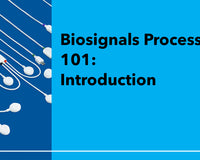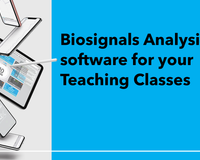👉Meet our Teaching Packs and what the students can learn with our software Add-Ons
ClassBIT Sciences and LabBIT Biosignals are our Educational Packs that include software extension focused on the signal analysis. OpenSignals has a suite of data analysis add-ons to create reports from the recorded data and extract features directly from the signals without having to do any coding.
In this article you can have access to all the useful features, statistical and spectral information the students can analyze in each type of biosignals.
1. Electromyography (EMG) Analysis Add-on

-
Automatic onset detection algorithm
-
Temporal & spectral feature extraction
-
Maximum Voluntary Contraction-dependent statistical analysis
-
Multi-channel signal processing
-
Direct parameter comparison of 2 selected muscle activations
-
Acquisition Parameters (start, end, duration)
-
Activation-specific parameters:
-
Start & end time
-
Latency
-
Max. & min. amplitudes
-
Peak-to-Peak amplitudes
-
Root-Mean-Square
-
Integral over activation segment (result only, not integral signal)
2. Electrodermal Activity (EDA) Events Add-on

-
Electrodermal Response (EDR) latency
-
EDR amplitude
-
EDR rise time
-
EDR recovery time to 50% of EDR amplitude
-
EDR recovery time to 63% of EDR amplitude
-
Response peak after stimulus
-
Total power estimation
3. Heart Rate Variability (HRV) Add-on

Time Domain Parameters:
-
RRI & NNI Tachogram
-
RRI & NNI Histogram
-
Min., max. & mean NNI
-
Standard Deviation of the NNI series (SDNN)
-
Root-Mean-Squared of the NNI series (RMSSD)
-
NN20 (# of differences between successive NNI > 20ms)
-
pNN20 (ratio of NN20 vs. total number of NNI)
-
NN50 (# of differences between successive NNI > 50ms)
-
pNN50 (ratio of NN50 vs. total number of NNI)
-
Mean heart rate
-
NN50 (# of differences between successive NNI > 50ms)
Frequency Domain Parameters (Welch's Method):
-
Very Low Frequency band (VLF) parameters
-
Low Frequency band (LF) parameters
-
High Frequency band (HF) parameters
-
Peak Frequencies
-
Absolute Powers
-
Normalized Powers (LF & HF)
-
LF/HF ratio
Nonlinear Parameters:
-
Poincaré plot
-
Standard deviation along the minor axis (SD1)
-
Standard deviation along the major axis (SD2)
-
SD1/SD2 ratio
4. Respiration (PZT & RIP) Analysis Add-on

-
Breathing dynamics identification & overall classification
-
Temporal & spectral feature extraction
-
Statistical amplitude, frequency, and overall signal parameters
-
Histogram & Power Spectral Density for breathing cycle interval data
-
Breathing cycle amplitude parameters:
-
Maximum, mean, standard deviation, root-mean-square & total energy estimation
-
Frequency parameters:
-
breathing frequency (in breath/min and f)
-
breathing frequency classification
-
-
Breath-to-Breath Interval (BBI) parameters:
-
Minimum, maximum, mean, standard deviation
-
Root-mean-square of successive BBI differences
-










